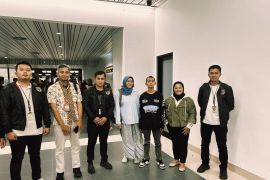And this could lead to a simple test for early diagnosis of the debilitating mental disorder.
OCD sufferers feel intense anxiety that bad things will happen, and are compelled to practice rituals - such as handwashing or arranging objects - to prevent them.
It`s known that the gene SLC1A1 controls a protein that recovers essential chemicals called amino acids from the kidneys, but it also controls these same amino acids when they act as transmitters in the brain.
Researchers from the Centenary Institute in Sydney have now identified mutations that stop the gene working properly in the kidneys, and suspect these same mutations are also involved in OCD.
They hope to develop their findings into a test that can allow earlier diagnosis of children with OCD.
"During the past few decades studies have revealed that OCD has a strong genetic component," Centenary Institute Professor John Rasko said in a statement.
And various genetic studies had linked the disease to the SLC1A1 gene, he said, but there was no physical proof of how the gene caused it.
"Our research is a major first step towards bridging this gap," Prof Rasko said.
The gene mutations identified by the Centenary Institute team, in research published in The Journal of Clinical Investigation, cause a rare kidney disorder known as dicarboxylic aminoaciduria (DA).
"People with DA can be identified through a simple urine test," Prof Rasko said.
"If this idea is confirmed in clinical trials, a simple urine test might be used to screen young children ... to identify anyone who may be at risk of early onset OCD."
OCD expert Dr Mairwen Jones from the University of Sydney says early onset OCD affects about three per cent of Australians.
"It is the most intractable and disabling of the anxiety disorders," she said in the Centenary Institute statement.
"The earlier we can diagnose OCD the sooner we can start treatment to manage the obsessive and compulsive behaviours."
The Centenary Institute is an international consortium of researchers from the University of Sydney, the Australian National University, Universite de Sherbrooke in Canada and Royal Prince Alfred Hospital.
(Uu.A050/KR-IFB/F001/P003)
Editor: Priyambodo RH
Copyright © ANTARA 2011











